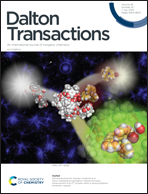In situ embedding of Mo2C/MoO3−x nanoparticles within a carbonized wood membrane as a self-supported pH-compatible cathode for efficient electrocatalytic H2 evolution†
Abstract
A rational design of active, stable, and pH-compatible electrocatalysts is crucial to produce high-purity H2via an electrocatalytic water splitting reaction. Herein, we report a carbonized wood membrane (CWM) embedded with Mo2C/MoO3−x nanoparticles (denoted as MCWM) as an efficient and stable self-supported H2 evolution cathode in both acidic and alkaline solutions. The CWM features a high surface area with numerous aligned and open channels and abundant porosity, greatly facilitating electrolyte transport and gas release. The in situ embedded Mo2C/MoO3−x nanoparticles are uniformly dispersed throughout the entire framework of the CWM, providing abundant active sites. These structural synergies endow the as-fabricated MCWM electrodes with excellent electrocatalytic H2 evolution activity, and the optimal MCWM electrode requires overpotentials of 187 and 275 mV to achieve a current density of 10 mA cm−2 in 0.5 M H2SO4 and 1.0 M KOH, respectively. Moreover, the MCWM electrode exhibits superior H2 evolution stability at a high current density of 80 mA cm−2 in both solutions with nearly 100% faradaic efficiencies. This work provides a promising nature-inspired strategy for the development of self-supported and pH-compatible electrodes for large-scale electrocatalytic H2 evolution reactions.



 Please wait while we load your content...
Please wait while we load your content...